Divulgazeral
Do vultures attack livestock? This is what science says
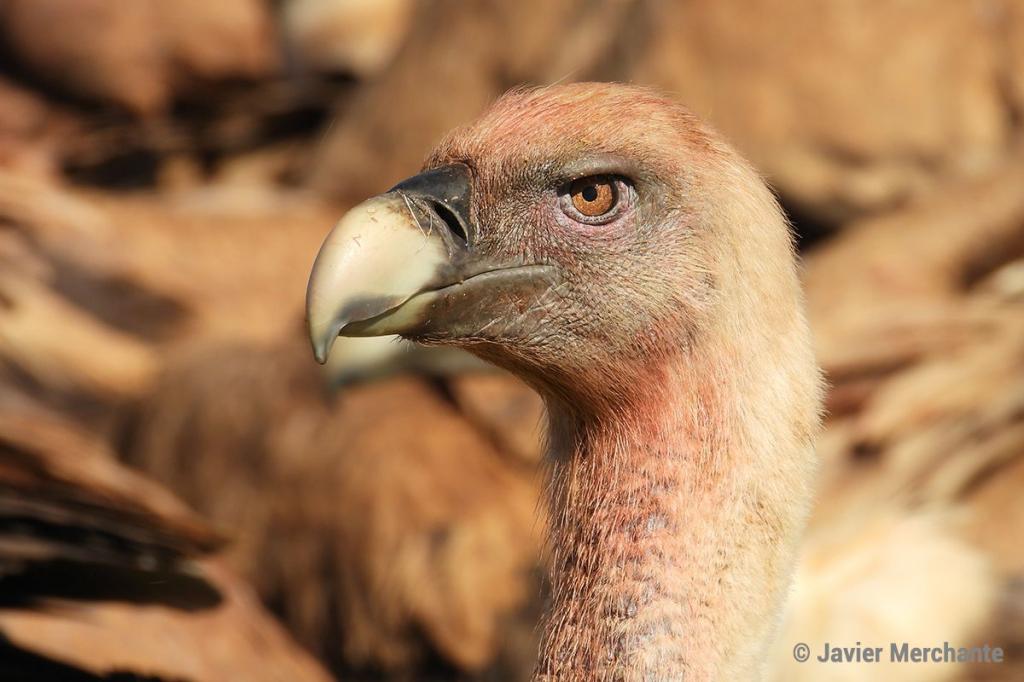
Misinterpretations, sensationalist press headlines, a lack of scientific rigour, fake news and the expansive force of social networks are the ingredients of the negative popular perception that has resulted in the absurd conflict generated around vultures and their presumed attacks on livestock. In this article, we explore this subject in the company of science.
From time to time, some of the most diverse components of the media echo the emergence of new cases of vulture "attacks" on live livestock, a somewhat morbid and highly controversial issue that is a magnet for fake news. Unfortunately, most of the news generated in this regard is usually accompanied by sensationalist press headlines and a lack of scientific rigour (and regretfully, sometimes even a lack of journalistic rigour). If we consider the power of the press to influence public opinion, plus the photos, videos and stories of personal experiences that flood social networks to “demonstrate” the occurrence of presumed attacks, or to give credibility to the most crazy plot lines, and the fact that we live in a society in which scientific culture and Environmental Education are conspicuous by their absence, then we are confronting the origin of an example of social alarm and an environmental conflict that is as absurd as it is difficult to address. It is not that science provides absolute truths –science cannot do everything–, but it rationally reduces the degree of uncertainty about what we think we know about our environment, approaching the reality of things. With the aim of shedding some light on this issue, in this article we therefore invite you to explore the unusual conflict generated by vulture attacks on livestock in the company of the knowledge provided by science.
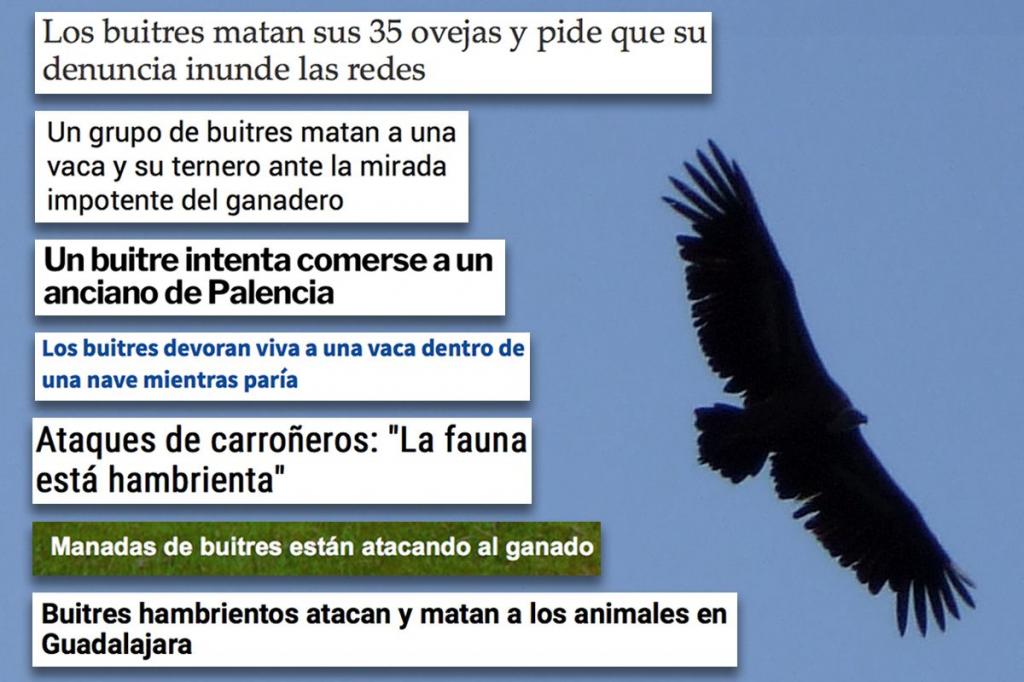
The history of the conflict
The attribution of attacks by vultures on live livestock is associated with one of the four species of scavenger birds that live in Europe: the griffon vulture (Gyps fulvus), whose European populations are mainly concentrated in Spain (more than 90%). Since prehistoric times, the evolution of vultures in the Iberian Peninsula has been linked to the presence of extensive livestock. As necrophagous birds –those that feed on the meat of dead animals–, they have always provided farmers (and society in general) with a free service of enormous ecological and sanitary value, since their function is to "clean" our ecosystems of carcasses that would otherwise become waste and a source of diseases. Farmers have, therefore, historically left the remains of their dead animals in the field –or at specific feeding points called muladares– to be cleaned by vultures, meaning that much of the vultures’ diet was based on the consumption of livestock carrion waste. Farmers and vultures have, therefore, historically been great allies and the livestock sector has, in fact, always considered the valuable cleaning service provided by these scavengers to be very positive.
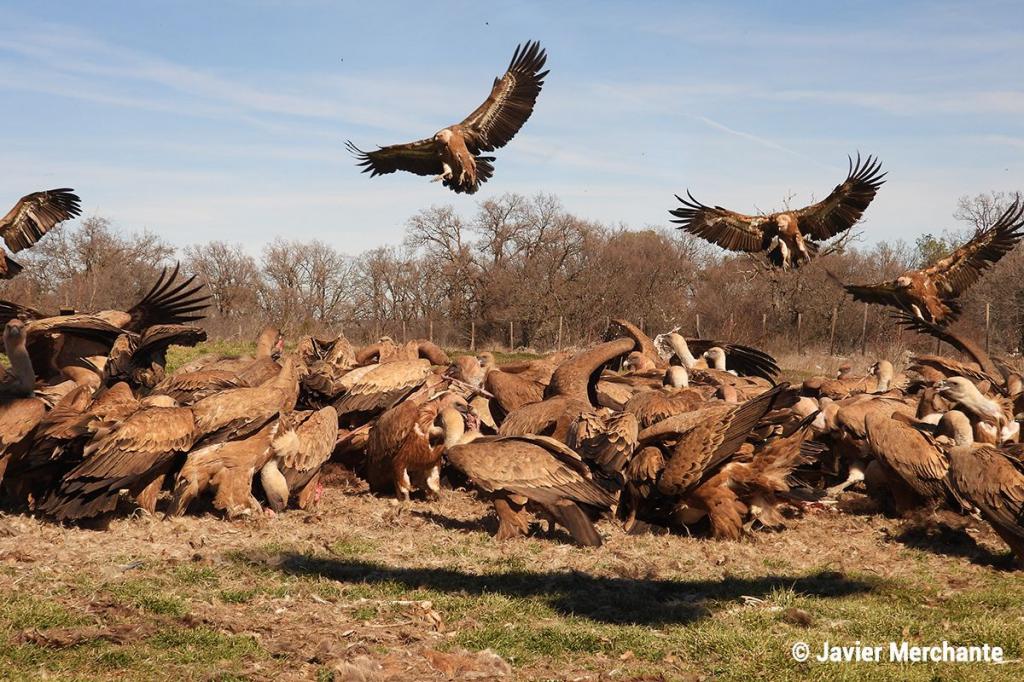
This relationship of mutualism between farmers and vultures began to twist in the late 90s of the last century, coinciding with the first reports of presumed attacks on live livestock. With the progressive implementation of health policies derived from the appearance of bovine spongiform encephalopathy, popularly known as mad cow disease, from 2002 onwards, farmers were forced to collect their dead animals, so they could not leave them in the field as they had always done. From 2005, with more restrictive health regulations, livestock carcasses had to be managed by means of official systems of controlled withdrawal and destruction. At the same time, many feeding stations that scavengers often frequented were closed, meaning that vultures had to confront a sudden reduction in the availability of carrion from livestock as a food resource. Over time, some hitherto anecdotal behavior in vultures, such as looking for food outside their usual foraging areas and a greater tolerance to human presence, began to be registered more often. All this facilitated the overall false social perception that vultures were starving and that, because of this, they had started to change their behavior, having to attack live animals to survive. In this context, the presumed vulture attacks on livestock were misinterpreted from the beginning by certain entities, groups and the media, which led to the spread of the idea that vultures had begun to prey on live animals to feed. This has ended up generating a considerable media and social impact, magnifying the reality of the issue and leading to the current conflict, to the point that more than 50% of farmers currently consider vultures as enemies rather than as allies.
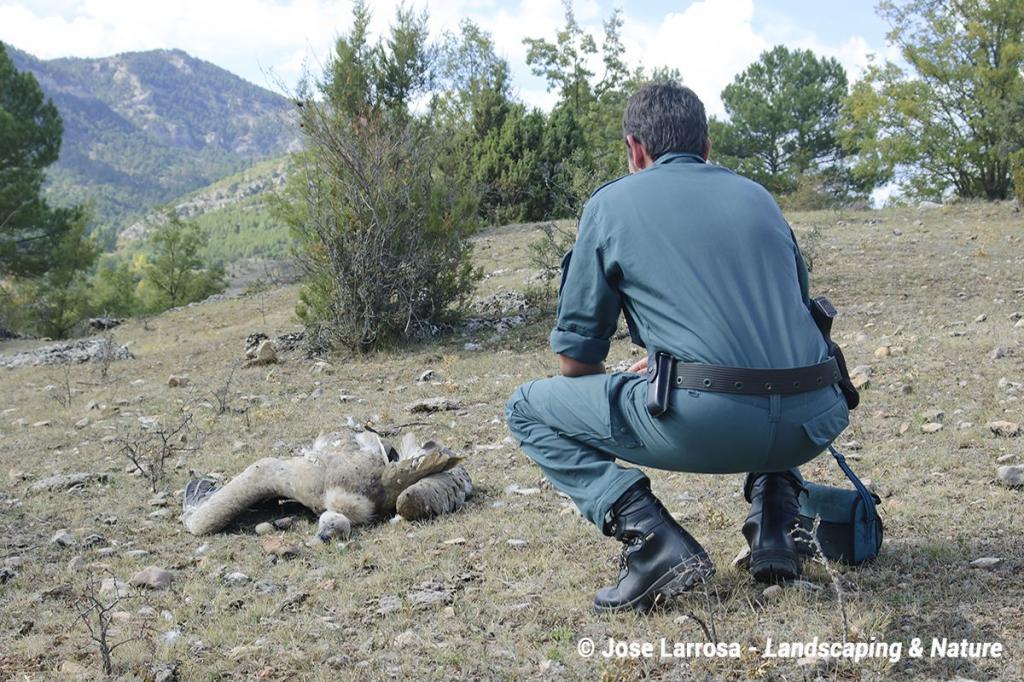
Unraveling the conflict with the help of science
It is convenient to clarify the term that is most often used in reference to this conflict, and in relation to it, in order to know more about the griffon vulture: the verb to attack. When this term is used to describe the behavior of a carnivorous animal that aims to get food, it is equivalent to the verb to prey. In the wildlife context, this means that when an animal that eats meat attacks another of a different species to feed, what this animal is doing must be expressed with the verb to hunt, which implies searching for and chasing a live prey to cause its death and eat it. Any predator species has had to develop the capacity and ability to do this, which involves between many thousands and several million years of evolution throughout which the morphological, behavioral, ecological and even physiological adaptive traits necessary for it are selected.
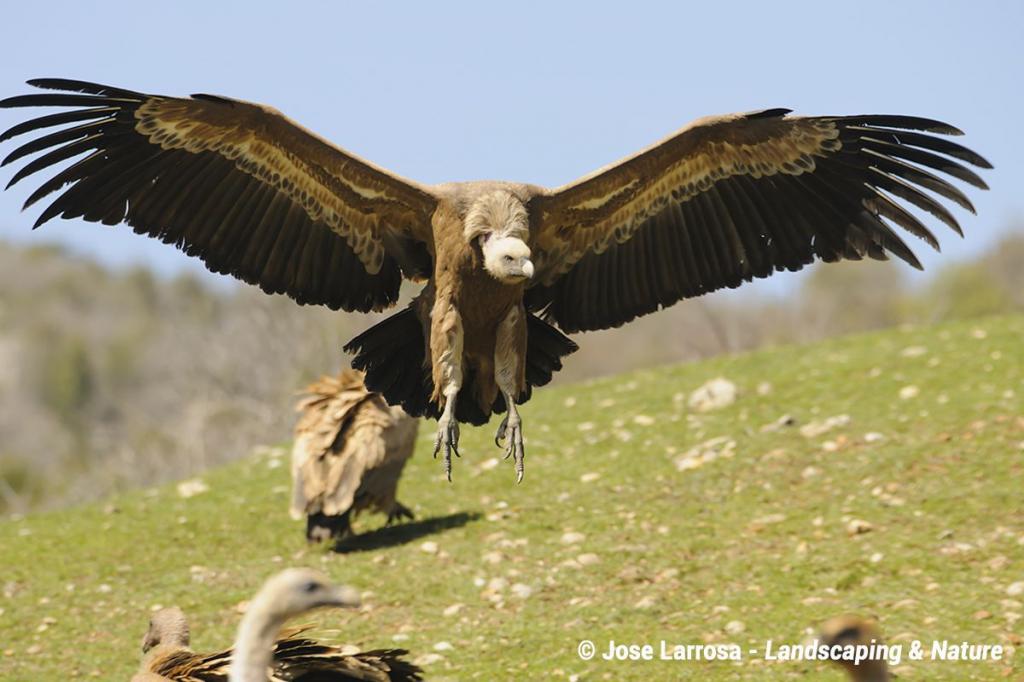
Vultures are relatively heavy, slow, lazy and clumsy birds on land, which are very bad qualities for a predator. They use the thermal currents to glide without effort with their enormous wings of more than two and a half meters in size, and this allows them to travel long distances to search for food, but they cannot make fast dive flights or agile maneuvers to fall upon a prey. They don't even have the claws or the strength required to catch and immobilize another animal. Their beaks are very strong –that is unquestionable– but are designed to tear skin and flesh and break bones, not to kill decisively like the sharp beak of an eagle does. They detect dead animals from heights thanks to their incredible sense of sight –sometimes with the help of their partners in the eating of carrion, the corvids–, not because they smell the blood, as claimed by some of the press, since their sense of smell is in fact atrophied (a valuable quality for specialists in feeding on the stinking and often rotten remains of dead animals). So no, vultures do not hunt for food, simply because they cannot do it. A very different thing is the fact that they can bite the hindquarters of a sick or weakened animal that is still alive, if it is lying on the ground, motionless. These pecks are part of a kind of "mortality test" that vultures carry out before pouncing on a carcass: if the animal does not react because it has no strength to move, vultures interpret that the animal is already dead –a dead animal does not actually move– and that "the meal is served". They don’t care if the unfortunate animal, whose death is inevitable and merely a matter of time, is still blinking or breathing. In many cases, corvids initiate this survey, which allows them to verify that the animal does not offer any resistance and that it is consequently ready to be consumed. Strictly speaking, in these cases –which are tremendously exceptional– it is obvious that vultures are the ultimate cause of the end of the life of an animal that is already dying from other causes, but saying that this is an “attack” on a live animal is at best imprecise and misguided.
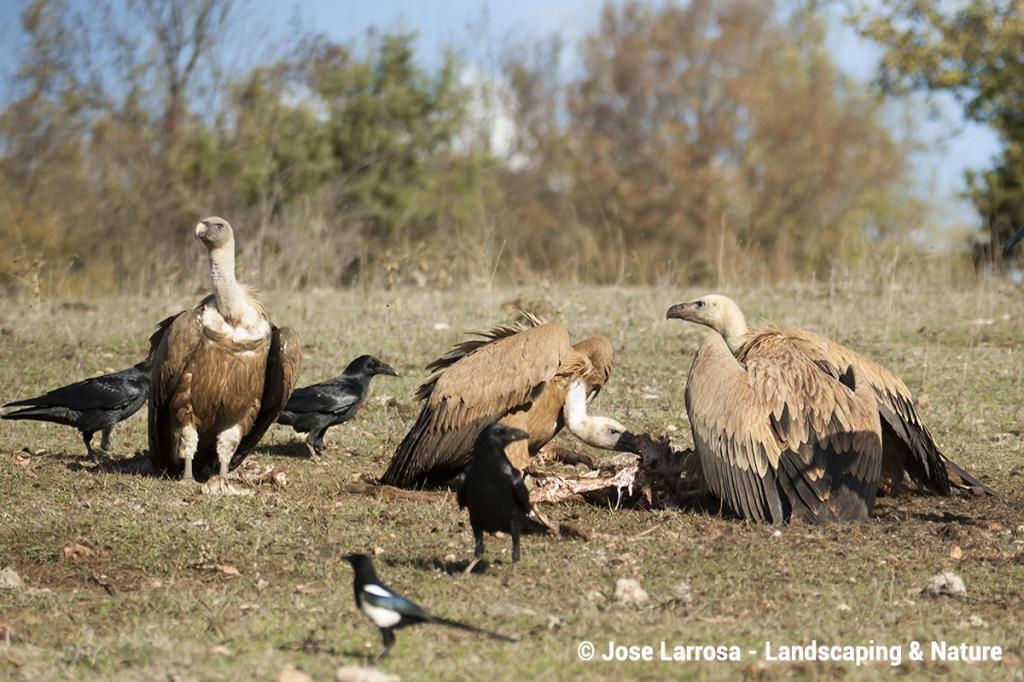
If we analyze the temporal pattern of the thousands of complaints issued by presumed attacks of vultures on livestock since the conflict emerged, attention is drawn to the striking rebound that occurred between 2006 and 2010 (almost three times the annual average recorded in previous years), and which coincided precisely with the period during which the availability of livestock carcasses in the field was especially low owing to the severity of the restrictive health policies established to deal with mad cow disease. It may seem obvious that hunger forced vultures to attack livestock, thus increasing the number of complaints during this period. However, studies show that there is no relationship between a lower trophic availability in a region, the population density of vultures and the frequency of complaints. In fact, the population of griffon vultures underwent a growing demographic trend during this period, and the populations of a hungry species do not increase. It is true that the sudden disappearance of livestock carcasses as a food resource has been associated with changes in the diet, behavior and displacement routines of vultures as regards seeking food, thus increasing its opportunistic character, but results from these studies allow us to confirm, with a reasonable degree of confidence, that hunger is not turning vultures into fearsome livestock predators.
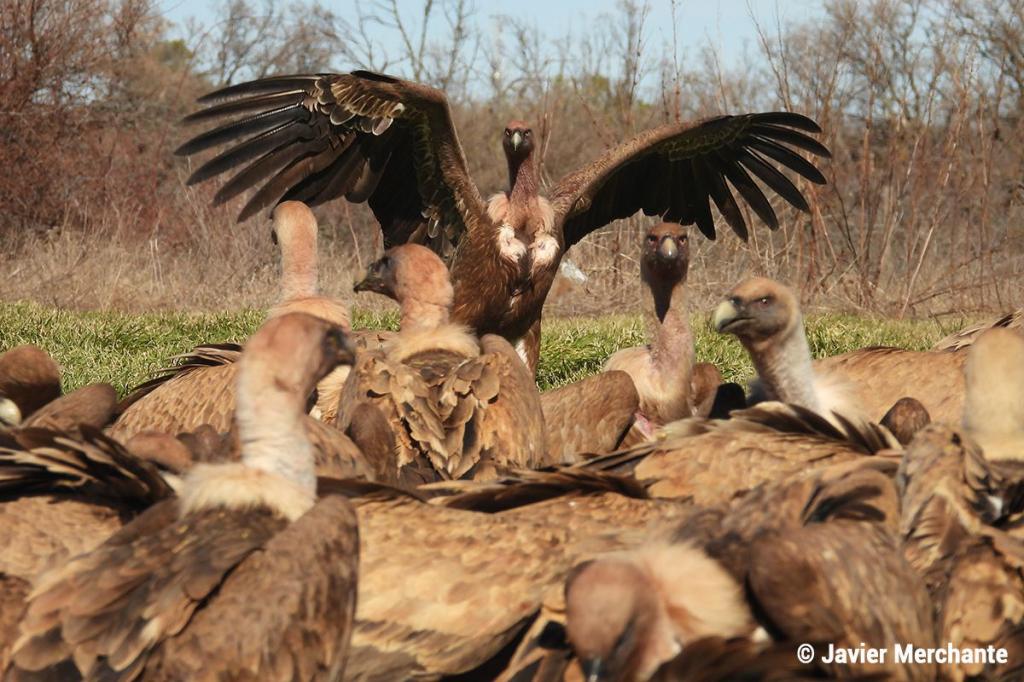
Furthermore, it is important to keep in mind that the origin of the conflict coincides with the occurrence of progressive and generalized changes in livestock management systems: between the end of the 20th century and the beginning of the 21st, extensive herds have gone from being constantly guarded by shepherds or dogs to having no attention paid to them during relatively long periods of time, even during the critical period of births, especially in areas in which large predators such as the wolf have disappeared. This is a relevant detail, since the casuistry of complaints issued for presumed attacks by vultures on livestock shows that the majority originate from farms on which the surveillance of livestock in very low or absent, and that these supposed attacks occur mainly during the period of births. This is why the animals generally affected by the presumed attacks are newborn or are only a few days old, and their mothers.
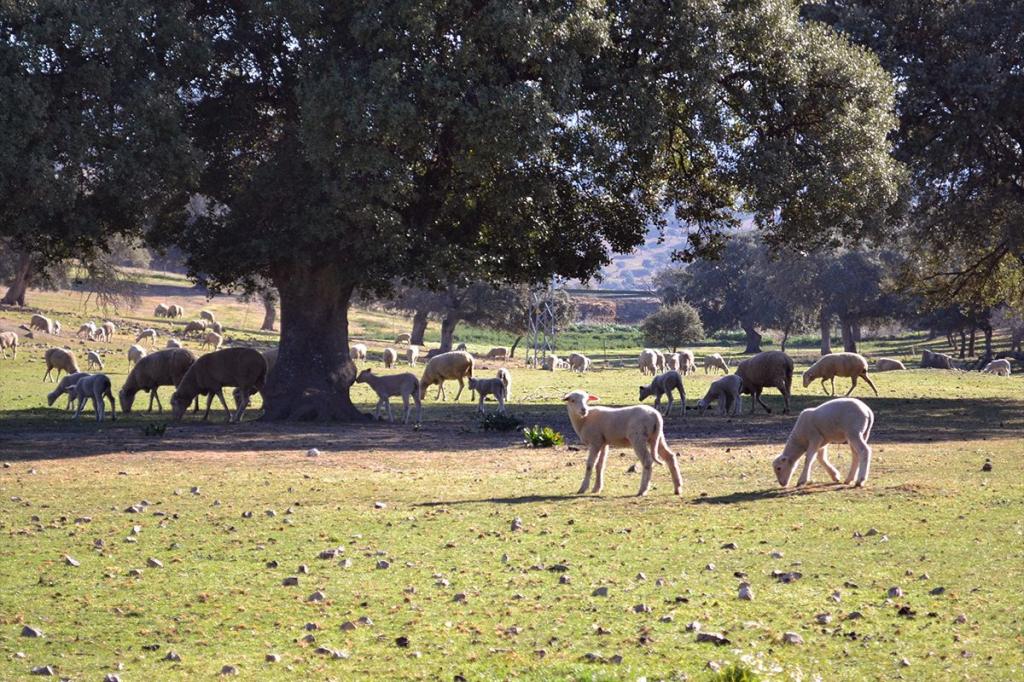
In a guarded herd, the shepherd can detect the weakness or illness of an animal and attend to it before its death is inevitable, or can notice the death of an animal before the arrival of vultures. However, a low monitoring of livestock implies that the farmer takes longer to detect possible diseases or illnesses, such as a complicated birth, or even the death of an animal. In addition, we must consider that the increase in the opportunistic behavior of vultures has reduced their arrival time in areas where they know they can easily find food. Births may provide placentas and carcasses –both mothers and offspring may die or be dying from complications suffered during births– and vultures have learned to exploit this predictable resource to meet their energy requirements. If we add that a group of about 100 vultures does not take more than 20 minutes to completely consume the body of an adult sheep, it is understandable that a farmer, whose animals were perfectly fine when they were last checked, returns a few days –or even a few hours– later and interprets the scene of an animal lying on the ground or its carcass surrounded by vultures as an attack perpetrated by the scavengers, although in reality vultures have only done their job: eating a dead animal or, very exceptionally, alleviating the agony of an animal that is dying for some other reason.
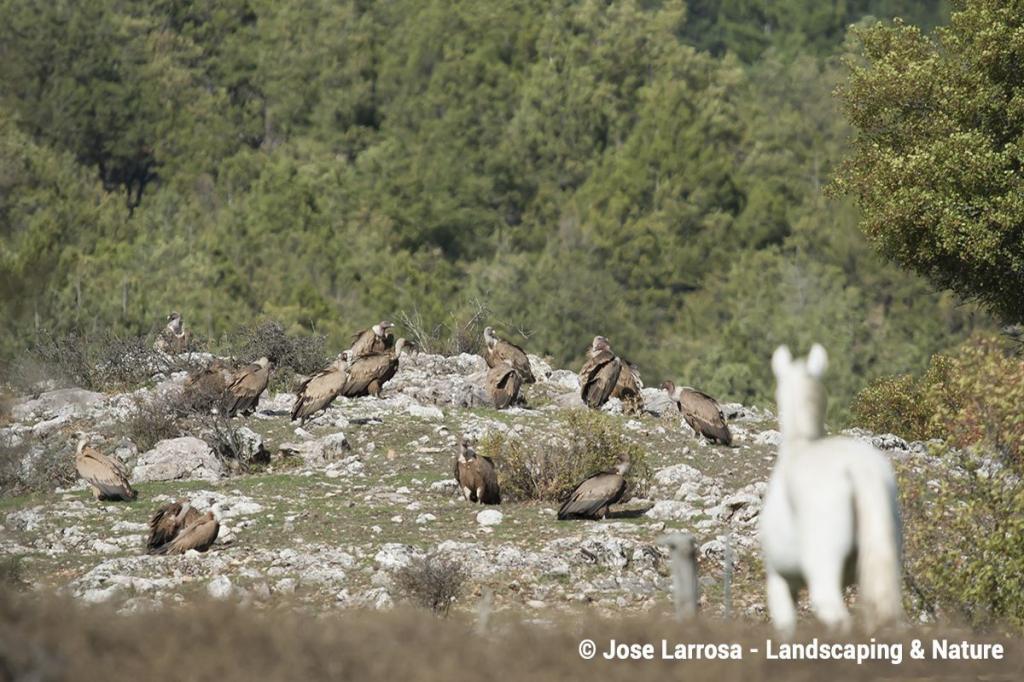
The magnification of the conflict during the period in which the highest number of complaints was recorded caused the Administrations to move up a gear in this matter, thus strengthening the procedure used to process complaints and grant compensation for vulture attacks on livestock. Thus, since 2011, an expert professional should assess the damage and circumstances associated with the complaints issued: a complaint can be accepted and financially compensated only if clear forensic evidence indicates that the animal was still alive when the vultures began to eat it, regardless of its state of health before death. Statistics show that, as expected, the annual number of cases diagnosed as positive was dramatically reduced. As an example, during the period between 2008 and 2010, up to 51% of the complaints were economically compensated in Catalonia, a percentage that decreased to almost 5% between 2011 and 2015, when the procedure required a forensic analysis of the reported cases. Two studies carried out in Spain and France, respectively, show that 70% of the complaints are directly rejected because they are post-mortem cases, that is, that the animal presumably attacked by vultures was already dead when the scavengers began to consume it; and that in 90% of the complaints that are investigated, a forensic veterinarian discards vultures as the cause of death or any type of injury to the animal presumably attacked. The real number of cases in which the intake of an animal that is still alive by vultures is detected –cases that are always associated with animals with a very unfavorable vital diagnosis– is extremely low, and vultures are never identified as the primary cause of death.
Terrifying predators of livestock or providers of ecosystem services?
The scientific information available suggests that the conflict generated between griffon vultures and their presumed attacks on livestock is nothing more than the result of a social alarm generated and amplified because of misinterpretations and bad press. The negative social perception of vultures that has developed is a clear and dramatic example of how a minor conflict, with ridiculous economic costs, can change a mutually beneficial relationship between humans and wildlife that has existed for thousands of years. The news items that leap into the media should not be exempt from a critical analysis by readers, listeners or viewers, and in relation to the conflict between vultures and livestock, their credibility should largely depend on the use of arguments employed with the scientific rigor that they deserve. On the other hand, the photos, videos and stories on this matter that extend like wildfire in social networks should be perceived with great caution, and by recalling that only a forensic study of each case makes it possible to properly determine the cause of the death of an animal. Above all, and regardless of each person’s personal perception of this issue, the invaluable role of vultures as providers of ecosystem services cannot be underestimated. Their role as scavengers is crucial for the stability and sustainability of trophic chains, disease control, nutrient recycling and the indirect regulation of the emission of greenhouse gases into the atmosphere. Moreover, they provide cultural and recreational value to our ecosystems because of their attractiveness for birdwatchers and lovers of ecotourism, thus generating important economic benefits for the rural areas that host these activities. So after all, everything indicates that vultures have never ceased to be our great allies.
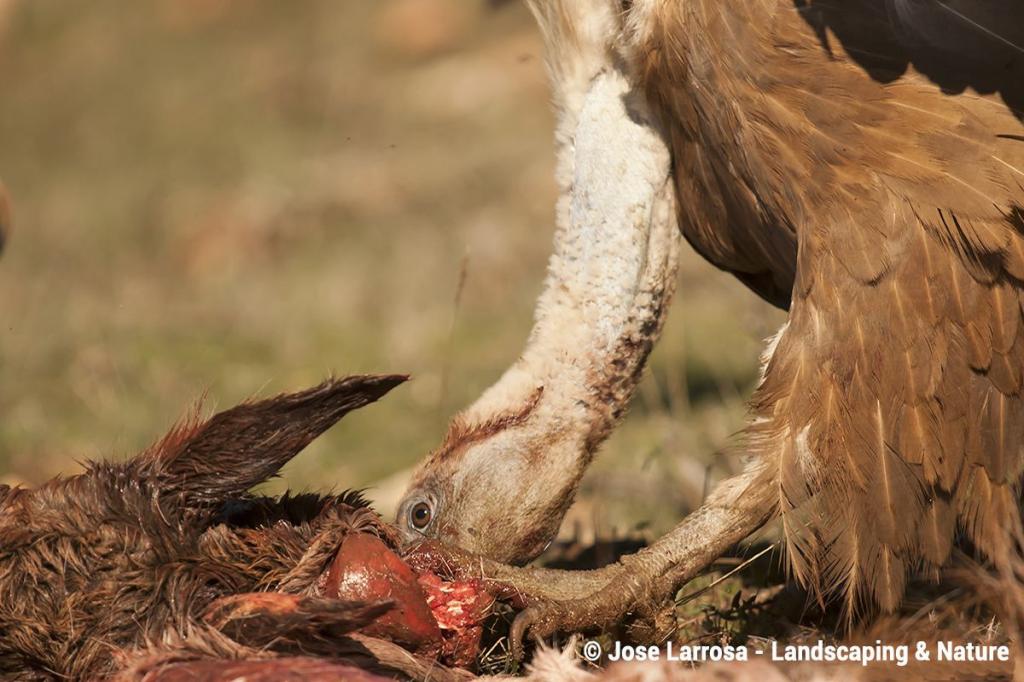
To learn more, here we show the bibliographic references of the most relevant publications generated so far from the scientific analysis of the conflict between humans and wildlife starring vultures and their presumed attacks on livestock:
- Margalida, A., Campión, D. 2009. Interacciones agresivas entre buitres leonados Gyps fulvus y ganado: aspectos ecológicos y económicos de un conflicto emergente. En: Donázar, J. A., Margalida, A., Campión, D. (Editores). Buitres, muladares y legislación sanitaria: Perspectivas de un conflicto y sus consecuencias desde la biología de la conservación. Munibe – Suplemento 29. Sociedad de Ciencias Aranzadi, Donostia-San Sebastián. 476-491 pp.
- Margalida, A., Campión, D., Donázar, J. A. 2011. Scavenger turned predator: European vultures' altered behaviour. Nature 480, 457.
- Margalida, A., Campión, D., Donázar, J. A. 2014. Vultures vs livestock: Conservation relationships in an emerging conflict between humans and wildlife. Oryx 48, 172-176.
- Dobado, P. M., Arenas, R. 2014. La mayoría de los ataques de buitres al ganado no son tales. Quercus 337, 62-63.
- Donázar, J. A., Cortés-Avizanda, A., Fargallo, J. A., Margalida, A., Moleón, M., Morales-Reyes, Z., Moreno-Opo, R., Pérez-García, J. M., Sánchez-Zapata, J. A., Zuberogoitia, I., Serrano D. 2016. Roles of raptors in a changing world: From flagships to providers of key ecosystem services. Ardeola 63, 181-234.
- Morales-Reyes, Z., Martín-López, B., Moleón, M., Mateo-Tomás, P., Botella, F., Margalida, A., Donázar, J. A., Blanco, G., Pérez, I., Sánchez-Zapata J. A. 2018. Farmer Perceptions of the Ecosystem Services Provided by Scavengers: What, Who, and to Whom. Conservation Letters 11, art. no. e12392.
- Duriez, O., Descaves, S., Gallais, R., Neouze, R., Fluhr, J., Decante, F. 2019. Vultures attacking livestock: A problem of vulture behavioural change or farmers' perception? Bird Conservation International In Press, 1-17.
Are you interested in Environmental Sciences and Science communication?
Subscribe to our Newsletter at the end of our website!
Are you a scientist in the field of Environmental Sciences and would like to disseminate the results of your work in Divulgazeral?
Contact us in info@azeral.es!

